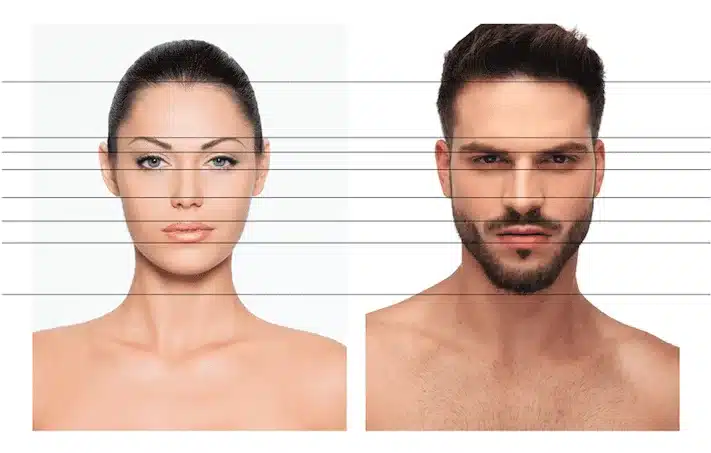Under-Eye Fillers: The Complete Guide to Cost, Benefits, and Recovery
Under-eye derma fillers are gaining popularity for their ability to combat dark circles, hollowness, puffy eyes, and sunken eyes as a cosmetic concern in facial treatments. This cosmetic treatment has roots in the early 2000s, when hyaluronic acid became a go-to solution for facial rejuvenation. Today, more people seek this quick fix to enhance their appearance without major surgery.
Understanding under-eye fillers is essential for anyone considering them. The benefits include instant volume and a refreshed look. However, it’s crucial to know the risks and recovery time involved. This guide will break down everything you need to know about under-eye derma fillers, helping you make an informed decision for brighter, youthful eyes.
Key Takeaways
- Under-eye fillers can effectively reduce dark circles and hollows, enhancing your overall appearance and boosting confidence.
- Aging causes natural volume loss in the face; understanding this can help you decide if fillers are right for you.
- Before treatment, consult with a qualified professional to discuss your goals and any concerns about the procedure.
- Follow aftercare instructions carefully to ensure optimal results and minimize the risk of complications.
- Be aware of potential side effects, such as swelling or bruising, and know when to seek medical advice.
- Compare costs and consider the long-term benefits of fillers, as they may save money on other beauty treatments over time.
Understanding Under-Eye Fillers
Purpose of Fillers
Eye dermal fillers target volume loss and shadowing under the eyes. As people age, they often experience eye hollowness and dark undereye shadows. This happens due to fat loss and thinning skin. Eye fillers help restore lost volume, making the area look fuller and more youthful.
Patients seek these cosmetic treatments to reduce the appearance of puffy undereye bags and improve overall facial aesthetics. Fillers can also enhance contouring, providing a smoother transition from the cheek to the lower eyelid.
Types of Dermal Fillers
Several types of dermal fillers are suitable for the delicate under-eye area. Hyaluronic acid fillers are popular choices. These fillers attract water, which helps maintain volume. Some common brands include Restylane and Juvederm.
Other options include calcium hydroxylapatite and poly-L-lactic acid. These fillers work differently but can also provide desired results. Each type has unique properties that affect how long they last and how they integrate with the skin.
Importance of Professional Consultation
Consulting with a qualified professional is crucial for anyone considering eye filler treatment. An experienced injector understands facial anatomy and knows how to avoid complications like eye filler lumps or eye filler bruising. They assess individual needs and recommend the best approach.
A thorough consultation includes discussing medical history, expectations, and any concerns about potential risks such as eye filler vascular occlusion. Patients should feel comfortable asking questions about procedures and recovery times.
Choosing a skilled provider increases the chances of a positive eye filler experience. Professionals use techniques that minimize discomfort and side effects. They can also suggest complementary treatments, like eye creams or skincare routines, to enhance results.
Recovery Considerations
Recovery after receiving eye dermal fillers is generally quick. Most patients return to normal activities within a day or two. Some swelling or bruising may occur but usually resolves in a week. Following aftercare instructions can help speed up healing.
Patients should avoid strenuous exercise for 24 hours post-treatment. This reduces the risk of complications and ensures optimal results.
How Faces Change With Age
Skin Elasticity
Aging significantly affects skin elasticity. As people age, their skin loses collagen and elastin. These proteins are essential for maintaining firmness. Skin wrinkles become more noticeable with time. The loss of elasticity leads to sagging in various facial areas.
The upper face often shows signs of aging first. Forehead lines and crow’s feet appear due to repeated muscle movements. The skin around the eyes is particularly thin and delicate. This area may develop eye wrinkles earlier than other parts of the face.
Fat Redistribution
Facial fat shifts occur as a person ages. Young faces typically have full cheeks and defined cheekbones. Over time, fat can diminish in some areas while accumulating in others. This change can create a tired or uneven appearance.
As fat diminishes, the cheeks may appear hollow. This can lead to a less youthful look. In contrast, fat deposits may increase around the jawline or neck. This results in an uneven skin tone and contributes to an aged appearance.
Gravity’s Role
Gravity plays a crucial role in altering facial structure over time. It pulls down on the skin and underlying tissues. As a result, sagging occurs in various regions of the face. The cheeks may droop, and jowls can form along the jawline.
This downward pull can also affect the brow area. Eyebrows may appear lower, leading to a tired look. Many people notice these changes in their late 30s or early 40s. By this time, they may start considering options for facial rejuvenation.
Wrinkles and Aging Regimen
Wrinkles develop as part of the natural aging process. Severe wrinkles often emerge from years of sun exposure and lifestyle choices. An effective aging regimen can help slow down these changes.
Hydration is vital for maintaining healthy skin. Drinking plenty of water supports skin elasticity. Moisturizers can help reduce the appearance of nearby wrinkles.
Sunscreen is another essential component of an aging regimen. Protecting the skin from UV rays helps prevent premature aging. Using products with antioxidants can also combat free radical damage.
In summary, understanding how faces change with age is important. Aging affects skin elasticity, fat distribution, and structural changes due to gravity. Recognizing these factors helps individuals make informed decisions about cosmetic treatments like under-eye fillers.
Benefits of Using Fillers
Non-Surgical Option
Fillers offer a non-surgical solution for under-eye concerns. Many people prefer this option over invasive procedures. The treatment involves minimal discomfort and no need for anesthesia. Patients can return to their daily activities almost immediately. This makes fillers a popular choice for those seeking quick enhancements without the risks of surgery.
Downtime is often a major concern for patients. With fillers, recovery is brief. Most individuals can resume normal activities right after the procedure. Some may experience slight swelling or bruising, but this usually resolves within a few days. This convenience appeals to many who want results without long waits.
Immediate Results
One of the most appealing aspects of fillers is the immediate results they provide. Patients often see changes as soon as the treatment is completed. Dark circles and hollows under the eyes can appear smoother instantly. This instant gratification can boost confidence levels significantly.
The effects of fillers are also long-lasting. Depending on the type used, results can last from six months to over a year. Hyaluronic acid fillers, for example, gradually dissolve in the body but maintain effectiveness during their lifespan. Patients appreciate that they do not need frequent visits to maintain their appearance.

Versatile Solutions
Fillers are versatile in addressing various cosmetic concerns. They can treat not only under-eye hollows but also other areas like cheeks and lips. This flexibility allows practitioners to create a balanced look across the face.
Patients often opt for combination treatments. For instance, using fillers alongside Botox can enhance overall facial aesthetics. This approach helps reduce wrinkles while adding volume where needed. Many clinics offer personalized plans to fit individual needs.
Fillers also appeal to a range of age groups. Younger individuals may use them for prevention or enhancement, while older patients might seek restoration of lost volume. This adaptability makes fillers suitable for almost anyone looking to improve their appearance.
Safety Considerations
Safety remains an important factor when considering fillers. FDA-approved products ensure quality and effectiveness. Practitioners should be certified and experienced in administering these treatments. Researching providers helps avoid complications and ensures satisfactory outcomes.
Before getting fillers, patients should discuss their goals with professionals. Understanding what to expect can lead to better satisfaction with the results.
Preparing for Filler Treatment
Consultation Importance
Consulting with a certified practitioner is crucial. This step helps set clear goals and expectations. A skilled doctor can assess your facial structure. They provide personalized advice based on your needs. Discussing your desired results ensures you are on the same page.
During this consultation, ask questions about the procedure. Understand what to expect during and after treatment. Your doctor should explain the types of fillers available. They should also discuss potential side effects. Knowing these details helps in making an informed decision.
Pre-Treatment Guidelines
Avoiding blood thinners before the procedure is essential. Medications like aspirin can increase bruising risk. Alcohol consumption should also be limited in the days leading up to treatment. Both substances affect blood flow and may lead to more swelling post-injection.
Follow these guidelines to ensure a smoother experience. Stopping blood thinners at least one week prior is advisable. This precaution minimizes complications during and after the injections.
Health Disclosure
Discuss any allergies or medical conditions with your doctor before treatment. Certain allergies can affect how your body reacts to fillers. If you have a history of skin reactions, inform your practitioner.
Medical conditions can also influence treatment choices. Conditions like autoimmune diseases may require special consideration. Your doctor needs all relevant information to provide safe care.
Post-Treatment Care
After receiving under-eye fillers, some swelling is normal. Expect mild discomfort as well. Ice packs can help reduce swelling and soothe the area. Follow your doctor’s post-treatment instructions carefully.
Avoid strenuous activities for at least 24 hours after treatment. This helps minimize swelling and bruising risks. Staying upright can also aid in recovery.
Understanding Results
Results from under-eye fillers are often visible immediately but may change over time. Initial swelling might obscure the final outcome. It typically settles within a few days.
Regular follow-ups with your doctor are important for maintaining results. Discuss how often you should return for touch-ups or additional treatments.
The Filler Procedure Explained
Typical Steps
The under-eye filler procedure involves several key steps. First, the practitioner evaluates the patient’s facial structure and discusses their goals. This assessment helps determine the appropriate type and amount of filler to use.
Next, the area is cleaned thoroughly to minimize the risk of infection. After that, a numbing agent is applied. This can be a topical cream or an injectable anesthetic. The numbing agent ensures that the patient feels minimal discomfort during the procedure.
Once the area is numb, the practitioner carefully injects the filler. They may use a fine needle or cannula for precision. Each injection targets specific areas under the eyes to achieve a smooth and youthful appearance. The entire process typically takes about 30 minutes to an hour.
Numbing Agents
Numbing agents play a crucial role in enhancing patient comfort. Topical anesthetics are often used first. They are applied to the skin and left for about 15-20 minutes before starting the injections. This allows enough time for the skin to become numb.
e practitioners may also use injectable numbing agents. These provide additional pain relief during the procedure. Patients often report feeling very little pain due to these measures. Comfort is essential, especially since this area is sensitive.
Duration and Sensations
The expected duration of an under-eye filler procedure is usually between 30 and 60 minutes. This timeframe includes preparation, application of numbing agents, and actual injections.
Patients may feel slight pressure or a pinching sensation during injections. Most describe it as tolerable discomfort rather than pain. Swelling and bruising can occur after the procedure but usually subside within a few days.
After treatment, patients can often resume normal activities right away. However, it’s advisable to avoid strenuous exercise or makeup application for at least 24 hours.
Results can be seen immediately but may take a few days to fully settle. The fillers typically last from six months to two years, depending on the product used and individual factors.
Aftercare and Recovery Tips
Ice Packs
Applying ice packs can help reduce swelling and bruising. Use a clean cloth to wrap the ice pack. Apply it gently to the under-eye area for 10-15 minutes. This process can be repeated every hour as needed. Cold therapy constricts blood vessels, which minimizes inflammation. Patients often notice less discomfort when they follow this step.
Activity Restrictions
Avoid strenuous activities right after the procedure. Heavy lifting or intense workouts can increase blood flow to the face. This may lead to more swelling and bruising. Rest is crucial during the first few days of recovery.
Sun exposure should also be limited. UV rays can irritate the skin and affect healing. Wearing sunglasses helps protect the treated area from direct sunlight. Staying indoors during peak hours is advisable.
Follow-Up Care
Scheduling a follow-up appointment with your practitioner is important. They will monitor your results and address any concerns you may have. Discuss any unexpected reactions or discomfort during this visit. Practitioners can provide tailored advice based on individual experiences.
Recovery time varies between individuals but typically lasts about one to two weeks. Most people return to normal activities shortly after treatment. However, some may experience lingering effects like mild swelling or tenderness.
Hydration and Nutrition
Staying hydrated supports overall recovery. Drinking plenty of water helps maintain skin elasticity and promotes healing. Eating a balanced diet rich in vitamins can also aid in the recovery process.
Foods high in vitamin K, such as spinach and kale, may help reduce bruising. Incorporating fruits rich in antioxidants can also benefit skin health.
Avoiding Certain Products
Refrain from using harsh skincare products immediately after treatment. This includes retinoids, exfoliants, and acids that can irritate sensitive skin. Wait at least one week before reintroducing these products into your routine.
Makeup use should also be limited initially. If makeup is necessary, opt for gentle, non-comedogenic products that won’t clog pores or irritate the area.
Signs of Complications
Be aware of signs that may indicate complications. These include excessive swelling, severe pain, or unusual discoloration that doesn’t improve over time. If any of these symptoms occur, contact your practitioner promptly for guidance.
Possible Side Effects and Risks
Common Effects
Under-eye derma fillers can lead to several common side effects. These usually occur right after the procedure. Patients often experience swelling, bruising, and redness at the injection site.
Swelling typically lasts for a few days. Most people notice it within 24 hours after treatment. Bruising may also appear, varying from mild to severe in different individuals. Redness can occur but usually fades quickly.
These effects are generally temporary and resolve on their own. However, they can be uncomfortable. Patients should be prepared for these typical reactions when opting for under-eye fillers.
Serious Risks
e risks associated with under-eye fillers are rare but serious. Infection is one of the most concerning complications. It can happen if proper hygiene is not maintained during the procedure. Symptoms may include increased pain, fever, or pus at the injection site.
Another serious risk is an allergic reaction to the filler material. This can cause severe swelling, itching, or rash. In extreme cases, it may require immediate medical attention.
Other potential complications include lumps or nodules forming under the skin. Vision problems have been reported as well but are extremely rare. These risks highlight the importance of careful consideration before undergoing this treatment.
Choosing a Professional
Selecting a qualified professional is crucial in minimizing risks. A licensed and experienced injector will understand facial anatomy well. They can help avoid complications associated with under-eye fillers.
Patients should research their provider thoroughly. Checking credentials and reviews is essential. Asking about their experience with under-eye fillers can provide reassurance.
Consultations allow patients to discuss concerns openly. During these meetings, professionals can explain the procedure in detail. They can also outline potential risks specific to each patient’s health history.
Following up with a professional after treatment is equally important. This ensures any side effects are monitored properly. It also provides an opportunity to address any concerns that may arise.
Cost and Affordability
Typical Costs
Under-eye derma fillers can range significantly in cost. Most people pay between $600 to $1,500 per treatment. The price varies based on multiple factors. The type of filler used plays a crucial role. Some fillers provide more volume and elasticity than others. This difference can impact the overall cost.
Influencing Factors
Practitioner’s expertise also affects pricing. Experienced professionals may charge more due to their skill level. Their knowledge can lead to better results and less risk of side effects. The specific area being treated matters too. Treating larger areas or complex cases may increase the fee.
Location is another factor that influences costs. Major cities often have higher prices compared to smaller towns. People should consider these aspects when planning for under-eye filler treatments.
Financing Options
Affording under-eye fillers can be challenging for some individuals. Many clinics offer financing options. These plans can make payments manageable over time. Consultations are also beneficial for understanding costs. They provide an opportunity to discuss specific needs and get a detailed estimate.
People should ask questions during consultations. Understanding what the treatment includes is essential. Knowing the expected results and any additional fees helps in budgeting.
Expected Results
Results from under-eye fillers typically last 6 to 12 months. This timeframe varies based on the individual and the type of filler used. Some fillers offer longer-lasting effects, while others may require more frequent touch-ups.
Considering the investment in under-eye fillers is important. People should weigh the benefits against the costs involved. Improved firmness and reduced shadows can enhance appearance and confidence.
In summary, knowing the cost and affordability of under-eye fillers helps in making informed decisions. The typical range, influencing factors, and financing options all play a part in planning this treatment effectively.
Other Uses for Fillers
Lip Enhancement
Fillers play a significant role in enhancing lips. They add volume and shape, creating a fuller appearance. Many individuals seek this treatment to improve their smile. The results can be immediate, often lasting several months.
A popular choice is hyaluronic acid fillers. These fillers are safe and effective. They provide a natural look while allowing for adjustments during the procedure. Patients appreciate that they can achieve their desired lip shape without surgery.
Cheek Volume
Fillers also enhance cheek volume. This area can lose fullness with age. Superficial fillers restore lost volume, giving a youthful look.
The process involves injecting filler into specific areas of the cheeks. This technique lifts the face and creates definition. Results can last from six months to two years, depending on the type of filler used.
Jawline Definition
Jawline definition is another key use for fillers. Many people desire a more contoured jawline for an attractive profile. Fillers help achieve this by adding structure and firmness.
Injecting filler along the jawline creates a sharper angle. This treatment can balance facial proportions effectively. Patients often report feeling more confident after this enhancement.
Smoothing Lines
Fillers are effective in smoothing nasolabial folds and marionette lines. Nasolabial folds run from the nose to the corners of the mouth. Marionette lines extend from the corners of the mouth downward.
These lines can deepen with age, making one appear older or tired. Using fillers in these areas softens the appearance of lines. The results provide a refreshed look and boost self-esteem.
Non-Surgical Nose Reshaping
Non-surgical nose reshaping is another innovative use of fillers. This method allows individuals to enhance their nose without invasive surgery.
Fillers can correct bumps or unevenness on the nose bridge. They can also lift the tip of the nose for a more refined look. The effects are temporary but provide an alternative to traditional rhinoplasty.
Hand Rejuvenation
Hand rejuvenation is an emerging trend using fillers as well. Hands often show signs of aging through wrinkles and volume loss. Fillers restore volume to the back of the hands, making them appear younger.
This treatment improves skin texture and reduces the visibility of veins and tendons. Many patients find this option appealing as it enhances overall appearance.
Closing Thoughts
Under-eye fillers can be a game changer for your appearance. They address dark circles and hollowness, giving you a refreshed look. Understanding the benefits, risks, and aftercare is crucial. You want to make informed decisions that suit your needs.
If you’re considering this treatment, take the next step. Consult with a qualified professional to discuss your options. Your journey to a brighter, more youthful look starts with knowledge and preparation. Don’t hesitate—explore how under-eye fillers can enhance your beauty today!
Frequently Asked Questions
What are under-eye fillers?
Under-eye fillers are injectable treatments used to reduce dark circles, hollows, and wrinkles in the under-eye area. They enhance volume and create a more youthful appearance.
How long do under-eye fillers last?
Typically, under-eye fillers last between 6 to 12 months. The duration depends on the type of filler used and individual factors like metabolism and lifestyle.
Are under-eye fillers safe?
Yes, under-eye fillers are generally safe when administered by a qualified professional. However, it’s crucial to discuss any medical conditions or allergies beforehand.
What should I expect during the filler procedure?
During the procedure, a licensed practitioner will inject the filler into targeted areas. It usually takes about 30 minutes, and you may experience mild discomfort.
Can I wear makeup after getting fillers?
It’s best to avoid makeup for at least 24 hours post-treatment. This allows your skin to heal properly and reduces the risk of infection.
How much do under-eye fillers cost?
The cost of under-eye fillers varies widely based on location and provider expertise. On average, prices range from $600 to $1,500 per session.
Are there any side effects?
Common side effects include swelling, bruising, and tenderness at the injection site. These typically resolve within a few days; however, consult your provider if symptoms persist.






